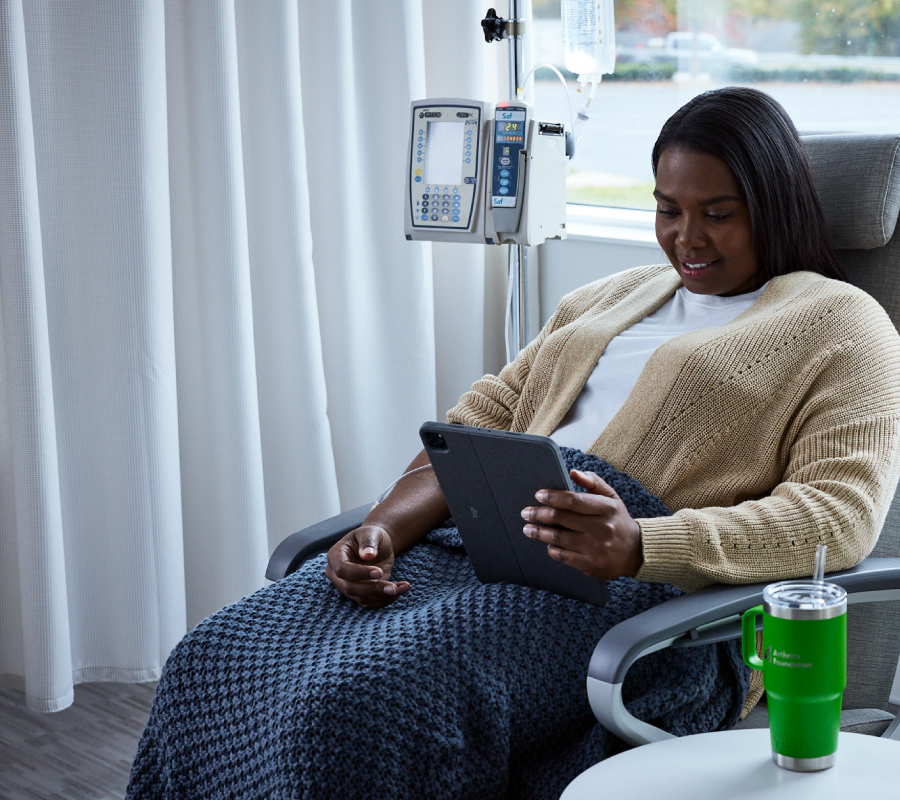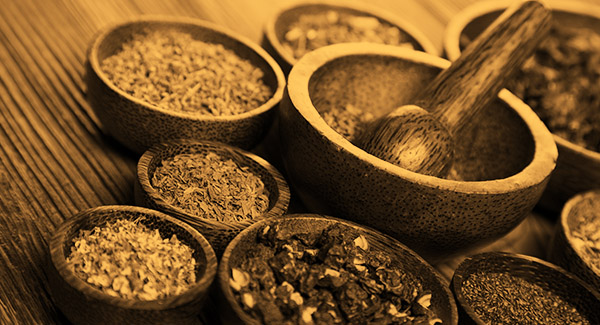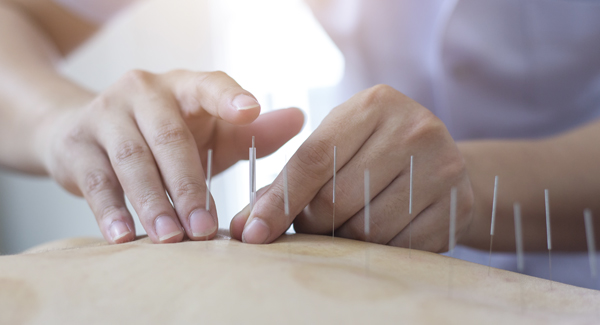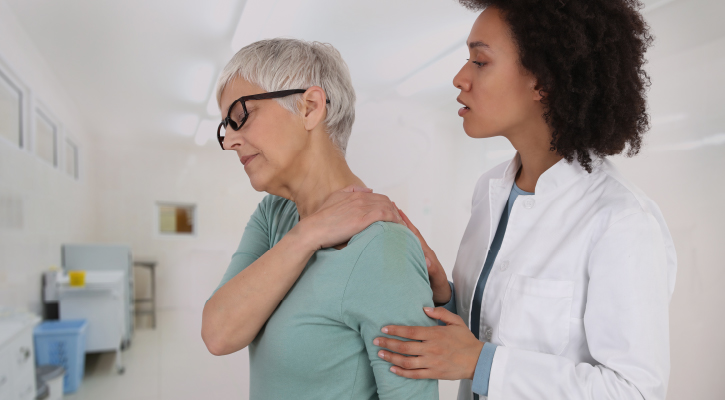CAM Therapies to Try for Juvenile Arthritis
Complementary therapies will not cure your child’s arthritis, but some alternative treatments may provide relief.
By Mary Anne Dunkin | Updated April 27, 2022
When your child is in pain or medications aren’t working as well or as quickly as you’d like, it’s natural to seek solutions elsewhere. Nearly 75% of parents of kids with arthritis turn to complementary and alternative medicine therapies (CAM) to help their child find relief. Most of these therapies aren’t part of standard medical care but may be used to enhance it or relieve treatment side effects.
Complementary vs. Alternative Therapies
Complementary therapies “complement” conventional treatments. For example, acupuncture may help patients cope with nausea, fatigue and other side effects of cancer treatments. Alternative therapies, on the other hand, are sometimes used instead of prescribed treatments. If you’re considering a CAM therapy for your child, it’s important to understand that it should be used alongside any treatment prescribed by your child’s doctor, not instead of it, explains Austin Dalrymple, DO, a pediatric rheumatologist and assistant professor of medicine at Saint Louis University School of Medicine in Missouri.
It’s also important to understand that while there is evidence that some complementary treatments relieve symptoms, they don’t usually alter the course of the disease.
Still, many doctors say complementary therapies may be worth trying if you proceed with caution. Investigate the risks and benefits and scientific evidence of any nontraditional treatment you’re considering, then discuss it with your child’s doctor, says Monica Friedman, DO, chief of pediatric rheumatology at Orlando Health Hospital for Children.
“Some supplements may affect the liver or the child’s growth, for example. “Just knowing the combination of medications and supplements or other CAM therapies is important for your child’s safety,” she says.
If you’re interested in CAM therapies for your child, here’s what you need to know about the most popular ones for JA.
Exercise
Children who have JA tend to be less active and fit than those who don’t have the disease. Yet studies show that regular exercise is important for kids with arthritis. A 2019 review of nine studies involving more than 450 young patients found that 30 to 50 minutes of exercise three times a week for at least 12 weeks significantly decreased pain and improved range of motion, muscle strength and quality of life. The studies looked at types of exercises ranging from Pilates, swimming and underwater resistance training to weight lifting and high-intensity jumping rope. All were safe and beneficial for kids with JA. Studies also showed that kids who worked with a physical therapist or were in group classes with other kids with JA had better outcomes.
Yoga
This practice combines stretching and strengthening exercises with mindfulness. A 2017 study in the Journal of Alternative and Complementary Medicine found that yoga improved physical and psychosocial symptoms in adults with rheumatoid arthritis (RA). A 2013 study published in the Clinical Journal of Pain found that young women with RA who participated in a six-week Iyengar yoga program experienced improvements in quality of life, pain, disability, and mood that continued at the two-month follow-up.
While published research on the benefits of yoga for juvenile arthritis is lacking, Dr. Dalrymple encourages activities that promote a mind-body balance, although those with hypermobility should be cautious and modify their moves.
Massage
Massage may relax muscles, lessen pain and improve circulation. Though there is limited research on the benefits of massage for kids with arthritis, past studies suggest it may have some benefits for pediatric pain. Two decades ago, a study from the University of Miami School of Medicine found that a daily 15-minute massage from a parent for 30 days decreased anxiety levels, blood levels of the stress hormone cortisol, pain and morning stiffness in children with juvenile idiopathic arthritis (JIA). A 2019 review of 11 studies found that massage therapy significantly reduced pain in kids with cancer or severe burns. If you’re interested in learning massage to help your child, speak with your child’s physical therapist or a massage therapist. Older children can also learn self-massage.
Acupuncture
A 2008 review of acupuncture in children from the National Center for Complementary Medicine, National Institutes of Health, found that acupuncture is generally safe for children, but that trials of acupuncture for musculoskeletal pain in children have been inconclusive. Still, hundreds of studies have shown that acupuncture can relieve even severe pain in some patients. In Western countries, pain is the main reason people seek acupuncture treatments, though the World Health Organization recognizes more than 40 conditions for which it’s effective. Acupuncture also helps calm the nervous system and creates a sense of well-being, Dr. Friedman says. She practices acupuncture on her own pediatric patients with arthritis and other pain syndromes and has seen positive results.
Foods and Supplements
Some children see benefits from certain foods or supplements. Blueberries and turmeric are two that are worth trying, says Dr. Dalrymple, but not necessarily together.
- Blueberries. In a 2015 Japanese study of 201 children who were taking etanercept (Enbrel), those who drank 50 milliliters of blueberry juice (about 1½ ounces) daily with their treatment had “clinically meaningful improvement” compared to those drinking no juice or a placebo juice. Inflammatory cytokine levels and some symptoms and side effects were significantly reduced as well.
- Curcumin. Although it has not been studied specifically in children, Dr. Dalrymple says he has had patients report good benefits from curcumin — the active compound in the bright yellow spice turmeric. Studies show that curcumin has an anti-inflammatory effect and inhibits inflammatory cytokines and enzymes, including cyclooxygenase-2 (COX-2), the target of celecoxib (Celebrex).
- Fish oil. Several studies of adults with RA or OA suggest that fish oil supplements may improve pain and function, but evidence for its effectiveness for juvenile arthritis is lacking. “There’s some evidence fish oil may be helpful for children with arthritis, and little evidence that it’s harmful,” says Dr. Dalrymple. “If a parent asked me about it, I’d say it’s worth a try.”
Always talk to your child’s doctor before trying a new supplement. They can help you decide which brand to choose and how much to give your child and help identify possible medication interactions.
Elimination Diets
Some people claim that certain foods worsen arthritis symptoms, but for the most part, research fails to show the benefits of eliminating specific foods or nutrients from the diet. For that reason, most pediatric rheumatologists advise against elimination diets. One exception for those with celiac disease or intolerance is gluten, but those cases are rare. “When you have a gluten intolerance, fixing that will help with the arthritis,” says Dr. Friedman. Otherwise, there is “not really anything to back-up a gluten-free diet.”
Cognitive Behavioral Therapy (CBT)
CBT is a form of psychotherapy that helps people change unhelpful thinking and behavior patterns to achieve lasting improvement in mood and function. While more research is needed to determine its effectiveness, it is commonly used to help people with chronic disease. At least one small study published in 2015 in Pediatric Rheumatology Online Journal evaluated its usefulness for pain in JIA. While a preliminary analysis showed no benefits against pain, those participating in six group sessions of CBT experienced better quality of life, reduction in pain catastrophizing and an improvement in adaptive pain cognitions (the beliefs around controlling pain and self-efficacy). Ask your child’s doctor or consult a pediatric psychologist or therapist for more information about how CBT may help.
CBD
CBD, short for cannabidiol, is an active compound found in the cannabis plant. It contains a small fraction of THC — the main chemical in marijuana — and doesn’t cause a high. A few studies in adults have shown that CBD is a potent anti-inflammatory and pain reliever in arthritis and may help reduce anxiety and insomnia.
A recent survey of 136 primary caregivers of children with JA found that while a small number were giving CBD to their child, mainly for joint pain and swelling, a majority were interested in trying it. Half of parents who used it reported that CBD increased their child’s well-being; about 30% saw no improvement. Most hadn’t talked to their rheumatologist about CBD and those who were using it didn’t know the dose they were giving their child.
Clinical trials of a CBD medication used to treat seizures have shown that its side effects were not serious in kids. But the safety profile of CBD isn’t known, nor is it clear what an effective dose for a child with JA might be. Another concern is that CBD may interact with some arthritis drugs, including prednisone, naproxen (Aleve) and tofacitinib (Xeljanz) as well as many antidepressants.
While trials of CBD for adults with rheumatoid arthritis are ongoing, studies of CBD for JA are still needed.

Stay in the Know. Live in the Yes.
Get involved with the arthritis community. Tell us a little about yourself and, based on your interests, you’ll receive emails packed with the latest information and resources to live your best life and connect with others.



